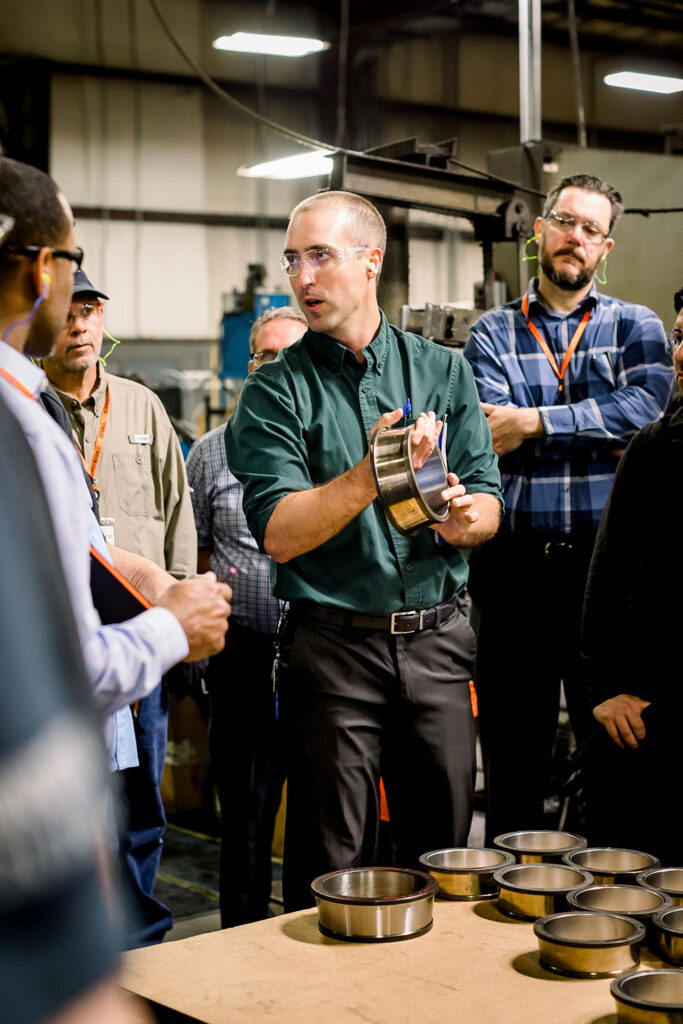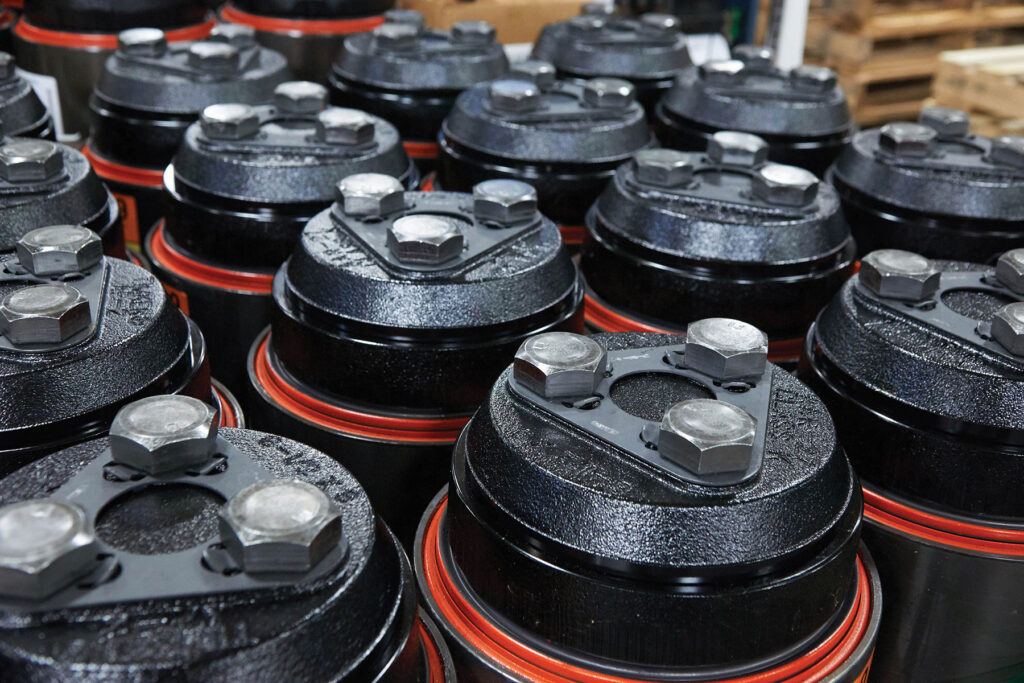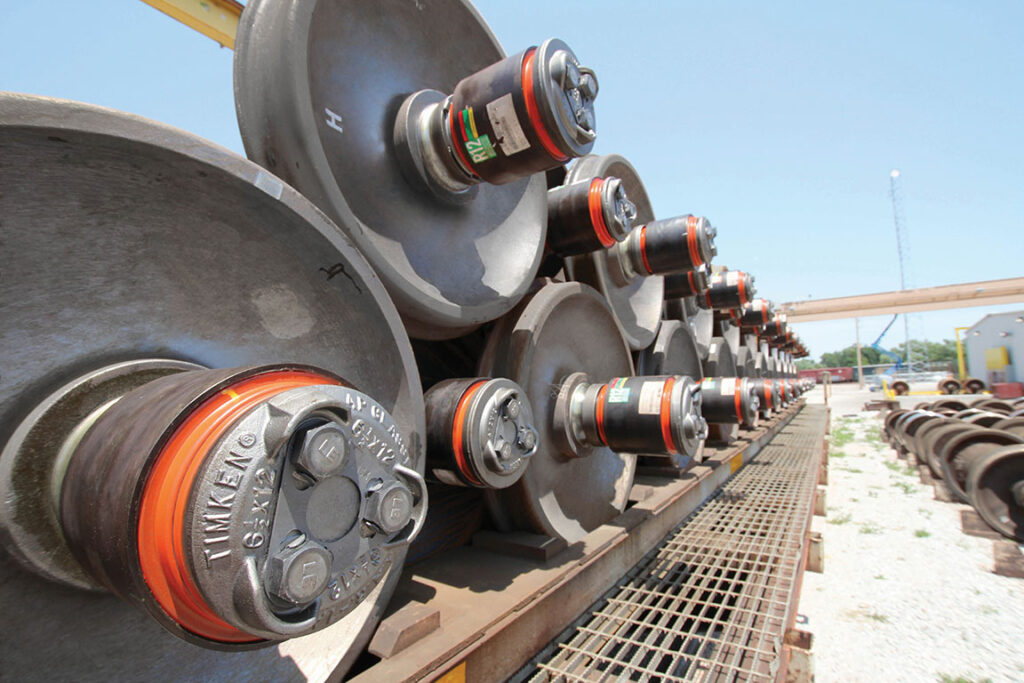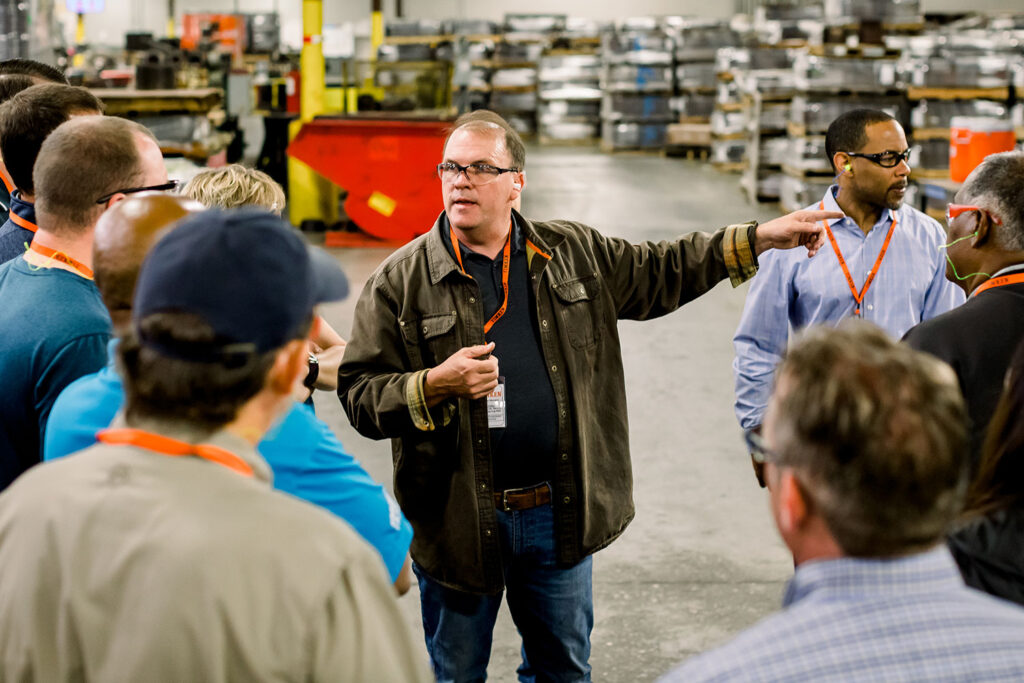Sustainability
Rail Wheel Bearings: The Original Circular Economy
A Culture of Recycling and Repair
“Before we had recycling, we had bearing reconditioning,” says Tony Koesters, who manages Timken’s North America Rail Services division. “Rail bearings endure a harsh, metal-on-metal environment, so operators go through a lot of them. It’s not practical to buy them all new, but it’s also super important to keep them in tip-top shape.”

Tony Koesters explains our cone remanufacturing operations to customers attending Timken’s Rail Bearing Fundamentals Workshop.
Timken bearing reconditioning services breathe new life into used bearings and help keep costs low for train operators. Today, it’s not uncommon for a Timken rail bearing to still be going strong after 50 years and four or five reconditioning sessions. The practice reduces environmental impacts and continues a long tradition of making the most of valuable parts and materials rather than automatically replacing old with new.
Koesters leads Timken’s bearing reconditioning facilities across the United States, and he and his team support the other reconditioning facilities around the world. “We can recondition any bearing you send us,” he says, “and a lot of our work is for rail.”
The frequency with which train operators recondition their bearings depends in large part on the risk to life and property that a derailment represents. “High-speed passenger rail operators in the Northeast corridor maintain cars more frequently than someone moving lumber through remote areas of Canada,” says Koesters.
Either way, most rail bearings go through regular reconditioning. “It’s the original circular economy,” he says. “A customer pulls cars for maintenance, takes off the bearings, and ships them to us. If they send us 400 bearings, they expect to get 400 back.”
Timken delivered thousands of reconditioned bearings in 2021 and leads the bearing reconditioning market globally. That’s partly because of the company’s bearing expertise, and partly a result of the consistent, carefully documented process that each reconditioned bearing goes through.
First, they’re cleaned and inspected. Some can be immediately reassembled and reused, while others are assessed for the level of reconditioning they need — from minor repairs to remanufacturing or component replacement.
“As a bearing manufacturer, Timken has the tools and expertise to regrind components, remove defects and bring bearings back to their original state,” says Koesters. “We also have easy access to replacement parts when we need them.”
Through the process, the team keeps careful record of each bearing and shares the data with customers. “We often work collaboratively to identify ways customers can improve bearing life,” he says.


Common-sense stewardship
By reconditioning their bearings, train operators reduce costs and get faster delivery along with the same premium performance as new bearings. Typical turnaround is 7-10 days, compared to six weeks to three months for new, and the Timken warranty is the same.
“Why would you toss a perfectly good bearing that just needs minor work? By salvaging the bulk of the bearing, you reduce raw materials by about 81%, eliminating the energy required to produce them.”
For rail industry leaders, that savings makes pure common sense — along with basic virtues like leaving things better than the way you found them.
Backed by 120 years of industry leadership, Timken innovates next-generation bearings for some of the world’s longest-range, luxury electric vehicles.
Last Updated: 2022/09/13
Published: 2022/08/14

